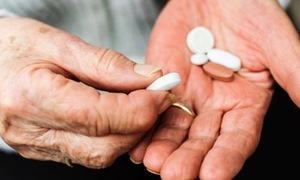
Whether they are fighting a debt and deficit disaster or charting a path back to surplus, Australian governments are on the hunt for savings. But not all savings are equal. Every saving should be judged on three questions: how much it saves, who it hurts, and how much it hurts them.
A new Grattan Institute report shows how the government can save more than $300m a year in the pharmaceutical benefits scheme (PBS). Unlike many cuts to health spending, it won’t hurt patients. It will take a nibble out of drug company profits, but it might also nudge them towards research into truly innovative, breakthrough drugs.
The idea is to set prices based on the best value drug. Some drugs are interchangeable. Although they have the same safety and health benefits, some of these drugs cost more than others. The government shouldn’t pay more for a costly drug if a cheaper one is just as good. Instead, the government price should be fixed at the cost of the cheapest option.
Drug companies would have to cut their price to match their cheapest competitor. If they don’t cut their prices, the patient would pay an extra fee, encouraging them to choose a drug that is better value. Patients would always be able to choose a drug without a premium and doctors could get the fee waived if their patient faced any risks from the low-cost drug.
It sounds like a great system. In fact, it’s Australia’s system, or at least it was meant to be. This policy has been in place since 1998, but poor implementation has turned a good idea into a sham. At every turn the policy lets high-cost drugs off the hook.
Many of the cheapest drugs are ignored because of an arbitrary rule. That is one reason why Australia applies the policy to only four groups of drugs, while Germany has 30 groups and the Netherlands has many more.
On top of this arbitrary rule, the way price gaps between drugs are calculated was devised by the pharmaceutical industry. The process starts with surveys of doctors and then applies so many statistical tests that price gaps between drugs are often ignored.
Since 2012 these statistical tests have been unnecessary. The government can now use comprehensive dispensing data from pharmacies, but instead it persists with expensive survey data that creates red tape and disguises wasteful spending.
The government also publishes a manual that instructs drug companies about how to cut their prices just enough to avoid triggering the policy, while keeping their prices as high as possible.
Fixing the policy is simple. The government can save over $300m by expanding the policy to drugs that were previously covered, and by comparing drug prices in a simpler and fairer way. By extending the policy to cover groups of drugs that other countries include, the government could save still more.
This is the kind of saving government should be pursuing. Patients will get drugs that work just as well, and the government will get a much better deal. If the government informs doctors, patients and pharmacists, it will be easy to avoid any extra fees that drug companies choose to charge.
The main downside will be lower prices and profits for drug companies. Compared to cutting back on health services, the risk this creates for people’s health is small. Unless cuts to these services are made carefully, the savings are often offset by long-term costs to the economy and the budget, not to mention the human cost of illness and lives cut short.
The pharmaceutical industry may complain that paying for value in the PBS puts lives at risk too, that it will stop research into new, life-saving drugs. But $300m a year – or even $1bn a year – is unlikely to make a much of a dent in the research budgets of multi-national drug companies.
Even if there is an impact on research, it could be positive. The policy would only affect new drugs if they offer no new health benefits. “Me-too” drugs would have their prices capped at the cost of the cheapest equivalent product. That couldn’t happen to drugs that work better than the alternatives. As a result, more drug companies might invest in drugs that achieve big health gains. If that happens this would be a rare health cut that cures, as well as saving money.
